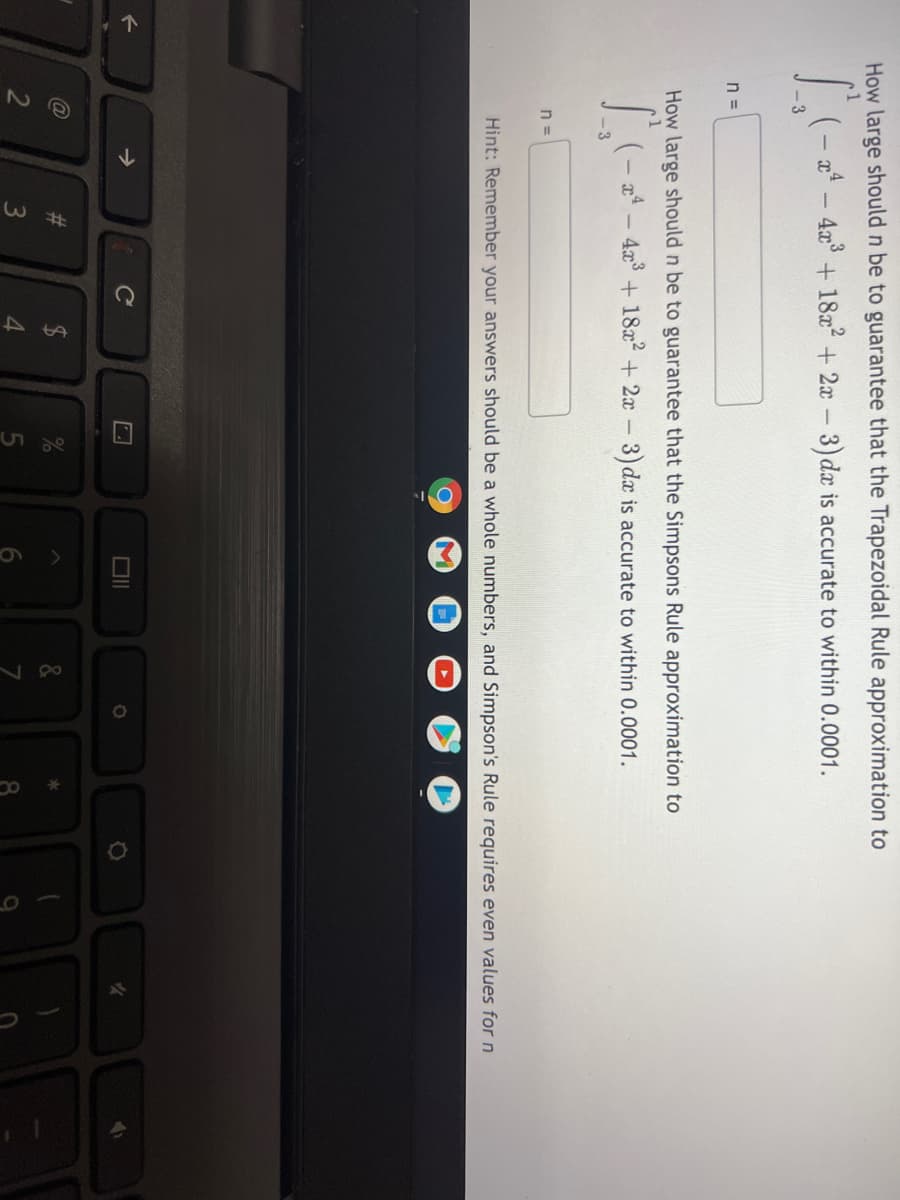How large should n be to guarantee that the Trapezoidal Rule approximation to 4x + 18x + 2x 3) dx is accurate to within 0.0001. -3 n = How large should n be to guarantee that the Simpsons Rule approximation to 24 4x + 18x + 2x 3) dx is accurate to within 0.0001. n = Hint: Remember your answers should be a whole numbers, and Simpson's Rule requires even values for n
How large should n be to guarantee that the Trapezoidal Rule approximation to 4x + 18x + 2x 3) dx is accurate to within 0.0001. -3 n = How large should n be to guarantee that the Simpsons Rule approximation to 24 4x + 18x + 2x 3) dx is accurate to within 0.0001. n = Hint: Remember your answers should be a whole numbers, and Simpson's Rule requires even values for n
Mathematics For Machine Technology
8th Edition
ISBN:9781337798310
Author:Peterson, John.
Publisher:Peterson, John.
Chapter59: Areas Of Rectangles, Parallelograms, And Trapezoids
Section: Chapter Questions
Problem 79A
Related questions
Question

Transcribed Image Text:6,
How large should n be to guarantee that the Trapezoidal Rule approximation to
x* - 4x + 18x +2x 3) dæ is accurate to within 0.0001.
|
-3
n =
How large should n be to guarantee that the Simpsons Rule approximation to
x* - 4x° + 18x2 + 2x 3) dx is accurate to within 0.0001.
-3
n =
Hint: Remember your answers should be a whole numbers, and Simpson's Rule requires even values for n
->
c
$
&
4.
Expert Solution
This question has been solved!
Explore an expertly crafted, step-by-step solution for a thorough understanding of key concepts.
Step by step
Solved in 2 steps with 2 images

Recommended textbooks for you

Mathematics For Machine Technology
Advanced Math
ISBN:
9781337798310
Author:
Peterson, John.
Publisher:
Cengage Learning,

Algebra & Trigonometry with Analytic Geometry
Algebra
ISBN:
9781133382119
Author:
Swokowski
Publisher:
Cengage

Mathematics For Machine Technology
Advanced Math
ISBN:
9781337798310
Author:
Peterson, John.
Publisher:
Cengage Learning,

Algebra & Trigonometry with Analytic Geometry
Algebra
ISBN:
9781133382119
Author:
Swokowski
Publisher:
Cengage